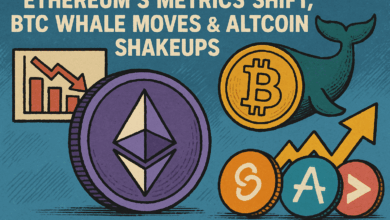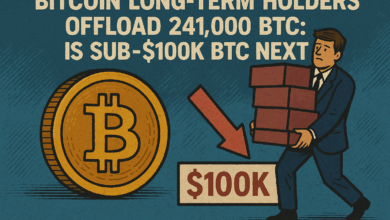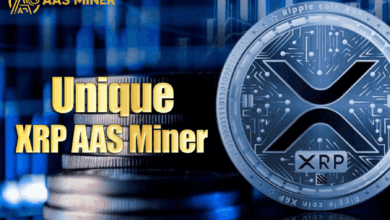Who Will Own the Next 10 Years of Finance?

Why would you leave your bank when you can’t sleep at night worrying about a smart contract bug?
It’s a fair question, and one that every investor must wrestle with as DeFi’s headline APYs outpace CeFi’s savings rates. In this deep dive, we’ll explore the hidden costs of user‑custody, the evolution of governance tokens, and how institutional players are hedging their bets between on‑chain yield farms and regulated exchanges.
We’ll also spotlight emerging hybrid models, CeFi outfits integrating DeFi rails and DeFi protocols seeking bank-like protections, and evaluate their chances of capturing mainstream adoption.
By article’s end, you’ll know where to park your capital for both explosive upside and peace of mind.
What’s the Real Difference Between DeFi and CeFi in 2025?
“Decentralization isn’t just about code. It’s about who you trust when things go sideways.”
At its core, CeFi (Centralized Finance) and DeFi (Decentralized Finance) offer similar services, lending, borrowing, trading, staking, but with radically different models under the hood.
CeFi involves platforms like Binance, Coinbase, or traditional brokers (yes, including Grimbix), where users trust a centralized entity to hold custody of funds and execute transactions. These platforms provide customer support, insurance mechanisms, and often smoother UX, but at the cost of transparency and control.
DeFi, on the other hand, operates on open-source smart contracts, think Aave, Uniswap, Curve, where custody remains with the user, and transactions are executed directly on-chain. There are no middlemen… but also no one to call if you lose access, misclick, or get rugged.
CeFi (Centralized Finance) — Key Features
- Custody: Platform-controlled (your assets are held by the provider)
- Transparency: Limited; internal processes are often opaque
- KYC/Regulation: Mandatory identity checks and compliance
- Support: Professional human teams and customer service
- Speed & UX: Fast, polished user experience
- Innovation Pace: Moderate; slower but more stable
DeFi (Decentralized Finance) — Key Features
- Custody: User-controlled (non-custodial wallets like MetaMask)
- Transparency: Full; open-source smart contracts and public ledgers
- KYC/Regulation: Rare or optional (but evolving with regulation)
- Support: Community-driven forums, DAOs, and Discord groups
- Speed & UX: Varies; depends on network congestion and gas fees
- Innovation Pace: Extremely rapid, experimental, often cutting-edge
In 2025, the two models aren’t just different, they’re strategically opposed in philosophy and execution. Understanding these structural contrasts is crucial before staking your funds on either side of the financial future.
Risks No One Talks About (Until It’s Too Late)
“You don’t care about risk management — until risk manages you.”
Most investors focus on returns. Smart investors prioritize risk-adjusted returns. And that means understanding not just the visible threats, but the structural risks baked into both DeFi and CeFi systems.
In CeFi, the primary risks include:
- Custodial failure (e.g., FTX collapse)
- Centralized control over user funds
- Frozen accounts during black swan events
- Opaque rehypothecation (re-using customer assets for other purposes)
In DeFi, risks shift into the code layer:
- Smart contract exploits (e.g., Wormhole, Ronin, Curve vulnerabilities)
- Governance takeovers (via token voting)
- Oracles and bridge hacks
- No safety net: once funds are lost, they’re often gone forever
Risk Checklist: CeFi vs DeFi — What You’re Really Exposed To
Platform Hack:
- CeFi: Medium risk — centralized platforms have strong security, but remain a target
for coordinated breaches (e.g., Mt. Gox, FTX). - DeFi: High risk — smart contract vulnerabilities, flash loan exploits, or logic
bugs can drain entire protocols within minutes.
Account Freeze or Lockout:
- CeFi: High risk — user accounts can be frozen due to KYC issues, regulation, or
internal decisions. - DeFi: No risk — since funds remain in your wallet, no one can freeze or seize
assets… but this also means no recourse if you mess up.
Key or Password Loss:
- CeFi: Minimal risk — platforms often allow password resets, 2FA recovery, or
customer support intervention. - DeFi: Critical risk — lose your private keys or seed phrase, and your funds are
gone forever. No second chances.
Insider Fraud or Abuse:
- CeFi: High risk — funds are custodial, meaning employees or insiders technically have access; history has shown misuse.
- DeFi: Low risk — there are no insiders in permissionless smart contracts (unless
poorly designed governance allows it).
Liquidity Collapse (Black Swan Events):
- CeFi: Medium risk — centralized platforms often have buffers, but they can halt
withdrawals (as seen in crypto winter 2022). - DeFi: High risk — a depegged stablecoin, oracle failure, or cascading liquidation
can cause protocol-wide meltdowns in seconds.
At Grimbix, we’ve seen users diversify across both systems to mitigate these asymmetrical risks – sometimes even splitting capital between a CeFi yield vault and a DeFi stablecoin farm. Risk can’t be eliminated, but it can be engineered around.
Where the Yield Lives — and What’s Behind It
“If you’re earning 15% on stablecoins, ask who’s paying it, and why.”
DeFi’s explosive yields are a magnet. Protocols offer 15–25% APYs on stablecoins, while CeFi players cap out around 5–8%. But what’s beneath the surface?
In DeFi, high yields are often generated from:
- Liquidity mining (you’re rewarded with protocol tokens)
- Lending pools (users borrow at variable rates)
- Leverage farming loops (e.g., borrowing against collateral to reinvest)
These strategies can amplify both returns and risk. For instance, in early 2024, multiple DeFi platforms saw TVL collapse overnight when stablecoins lost peg due to governance failure or collateral devaluation.
CeFi, on the other hand, generates yield through institutional lending, staking services, and sometimes market-making. While yields are lower, capital safety is often higher, backed by reserve requirements or third-party custodians.
What matters most? Sustainability. If a protocol promises double-digit returns without a clear, transparent revenue model, you’re likely the exit liquidity.
Grimbix’s upcoming Yield Risk Score tool (currently in beta) aims to help users gauge whether a yield is real, or just temporary hype. Because in finance, the “why” behind the number matters more than the number itself.
The Rise of Hybrids: Are They the Best of Both Worlds?
“What if you could have CeFi safety with DeFi innovation?”
Enter the hybrid model – a fast-growing space in 2025, blending the strengths of both systems. You’ve likely already seen it in action:
- Coinbase & Kraken offering DeFi tokens with centralized custody
- Aave Arc — a KYC-compliant version of Aave, built for institutions
- Compound Treasury — offering fixed-income from DeFi yields, with CeFi-style
compliance
These platforms bridge trust and efficiency, offering regulated access to decentralized protocols. They’re particularly appealing to family offices, hedge funds, and conservative investors who want DeFi returns without the chaos.
But it’s not without trade-offs.
- Innovation slows down under regulatory frameworks
- Custodians may still freeze assets during black swan events
- On-chain composability is often limited
Still, hybrid players are likely to own a large slice of the “next billion users”. Platforms like Grimbix are closely watching this shift, building infrastructure that can adapt to both pure on-chain protocols and semi-decentralized ecosystems.
Choosing Your Side: A Smart Investor’s Checklist
“Don’t just follow the yield. Follow the structure.”
So, should you lean DeFi or CeFi in 2025? The answer depends on who you are, and what you need.
Smart investors increasingly use a dual-stack approach:
- CeFi for onboarding, stable returns, and large capital
- DeFi for alpha hunting,experimentation, and diversification
Grimbix has embraced this hybrid mindset by providing both traditional brokerage tools and gateway features to explore vetted DeFi opportunities, all within a risk-aware environment.
Final Thought
The question isn’t whether DeFi or CeFi will win.
It’s who adapts best to a world where both must coexist.
Your job as an investor? Know the terrain, weigh the risks, and choose tools that give you an edge, on-chain or off.
Source link




